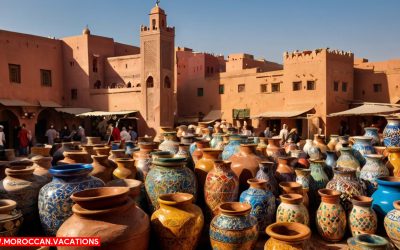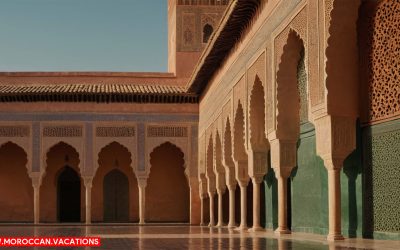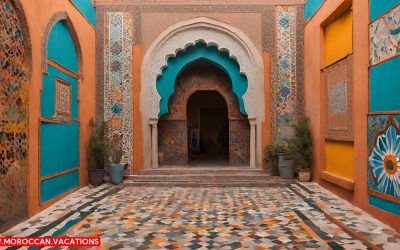The Rich Heritage of Marrakesh’s Art
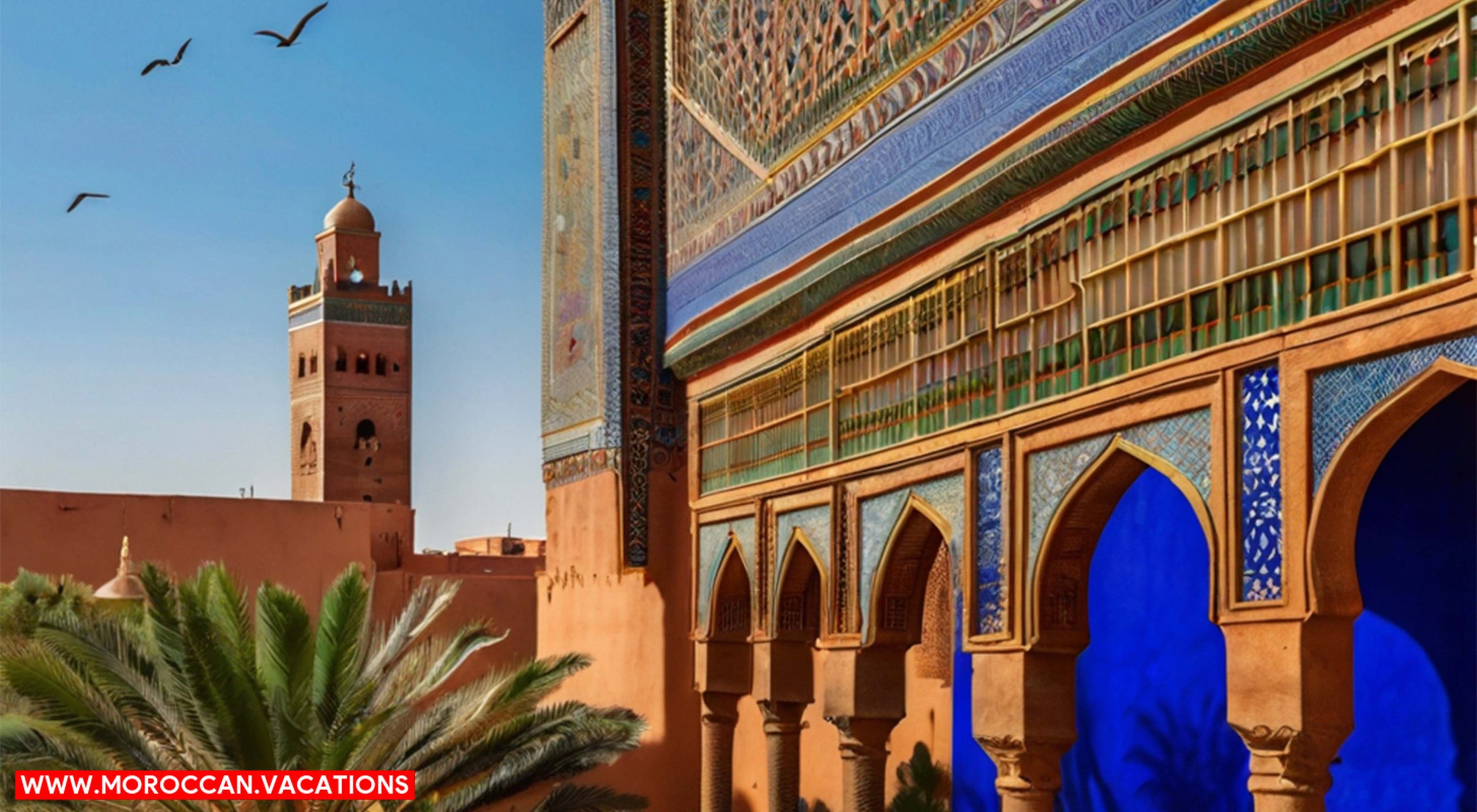

Step into the vibrant world of Marrakesh’s art scene, where tradition and modernity collide in a captivating dance. Here, ancient crafts intertwine with contemporary artistry, creating a tapestry of creativity that will leave you in awe. Immerse yourself in the rich heritage of this Moroccan city, where Islamic art influences the modern artistic landscape. From lively art festivals to thought-provoking street art, Marrakesh is a haven for artists and art enthusiasts alike. Get ready to witness the transformative power of art and discover the intersection of tradition and innovation.
Discover the captivating fusion of traditional and modern art in Marrakesh, where the rich heritage of the city’s artistic legacy is brought to life through a vibrant blend of colors, textures, and techniques. Marrakesh has long been a cultural melting pot, drawing influences from various civilizations that have left their mark on the city. Exploring the art scene here is like stepping into a time capsule, where ancient traditions coexist harmoniously with contemporary expressions.
The preservation of artistic traditions is of utmost importance in Marrakesh. From the intricate geometric patterns of zellige tilework to the elaborate carvings of wooden doors, the city’s craftsmen meticulously maintain the techniques and skills passed down through generations. Traditional art forms such as calligraphy, pottery, and carpet weaving continue to thrive, with artisans honing their craft and infusing their work with a sense of pride and dedication.
However, Marrakesh also embraces modern influences, seamlessly blending them with its traditional roots. Galleries and art spaces have emerged throughout the city, showcasing the works of local and international artists who push the boundaries of creativity. The art scene in Marrakesh is a reflection of the city’s dynamic spirit, where artists are encouraged to experiment, challenge conventions, and explore new ways of expression.
In this vibrant artistic landscape, Marrakesh offers the freedom to engage with art in a multitude of forms. Whether you are wandering through the narrow streets of the medina, browsing the contemporary galleries of Gueliz, or attending art festivals and exhibitions, you will find yourself captivated by the rich tapestry of artistic traditions and the innovative works that define Marrakesh’s art scene.
Exploring the Contemporary Art Galleries
As you continue your exploration of Marrakesh’s art scene, immerse yourself in the contemporary art galleries that seamlessly blend tradition and modernity. These galleries offer a unique perspective on the city’s vibrant art culture, showcasing the works of both established and emerging artists. Here are three reasons why you should visit these contemporary art exhibitions:
- Diverse Range of Artistic Styles: Marrakesh’s contemporary art galleries provide a platform for artists to express their creativity through various mediums and styles. From abstract paintings to sculptures made from recycled materials, you will encounter a diverse range of artistic expressions that push the boundaries of traditional Moroccan art.
- Exposure to Emerging Artists: The galleries in Marrakesh often feature the works of emerging artists who are pushing the boundaries of contemporary art in Morocco. By visiting these exhibitions, you have the opportunity to discover and support these talented individuals at the early stages of their careers.
- Dialogue between Tradition and Modernity: One of the most intriguing aspects of Marrakesh’s contemporary art scene is the way it seamlessly blends tradition with modernity. Many artists draw inspiration from Morocco’s rich cultural heritage while incorporating contemporary elements and techniques. This fusion creates thought-provoking artworks that challenge conventional notions of art and culture.
Traditional Crafts Meet Modern Artistry
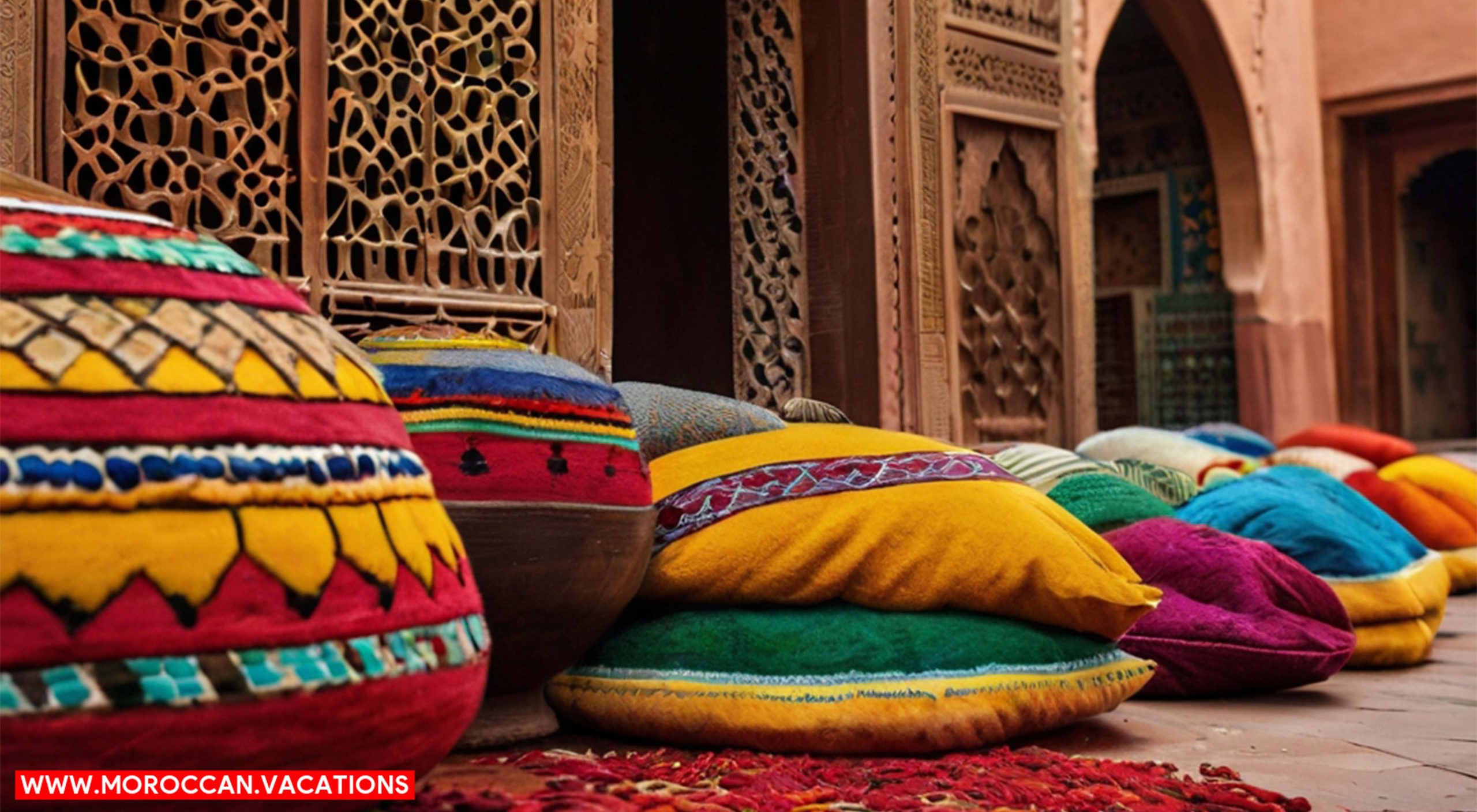

Immerse yourself in the intersection of tradition and modernity as traditional crafts meet modern artistry in Marrakesh’s art scene. Marrakesh has long been known for its rich heritage of traditional crafts, such as pottery, carpet weaving, and metalwork. These crafts have been passed down through generations, preserving the techniques and designs that have defined Moroccan culture for centuries. However, in recent years, there has been a surge of contemporary artists who are reimagining these traditional techniques and incorporating them into their modern designs.
This blending of tradition and modernity has created a vibrant and dynamic art scene in Marrakesh. Artists are experimenting with materials, colors, and forms to create unique and innovative pieces that pay homage to the past while pushing the boundaries of artistic expression. The result is a fascinating fusion of old and new, where traditional craftsmanship meets contemporary aesthetics.
One example of this can be seen in the realm of pottery. Traditional Moroccan pottery, known as “zellij,” is characterized by intricate geometric patterns and vibrant colors. Contemporary artists are taking these traditional techniques and using them to create modern, minimalist designs that are both visually striking and culturally significant.
The marriage of traditional crafts and modern artistry in Marrakesh’s art scene is a testament to the city’s rich cultural heritage and its embrace of innovation. It offers visitors a unique opportunity to witness the evolution of Moroccan craftsmanship and experience firsthand the harmonious coexistence of tradition and modernity.
The Influence of Islamic Art in Modern Marrakesh
Explore the profound impact of Islamic art on modern Marrakesh through its intricate designs and timeless motifs. Marrakesh, a city known for its vibrant art scene, has been greatly influenced by the rich artistic traditions of Islamic art. Here are three ways in which Islamic art has shaped modern Marrakesh:
- Influence of Calligraphy: Islamic calligraphy, with its flowing and ornamental style, has become a prominent feature in modern Marrakesh’s art scene. Artists incorporate Arabic script into their works, using it not only as a form of communication but also as a visual element that adds depth and meaning to their pieces. The elegant curves and intricate details of calligraphy serve as a reminder of the city’s Islamic heritage.
- Fusion of Geometric Patterns: Islamic art is renowned for its geometric patterns, and these patterns have seamlessly merged with modern techniques in Marrakesh. Artists combine traditional geometric designs with contemporary materials and mediums, resulting in innovative and visually stunning artworks. This fusion of past and present creates a unique aesthetic that captures the essence of Marrakesh’s evolving art scene.
- Integration of Modern Techniques: While Islamic art is deeply rooted in tradition, modern Marrakesh artists are not afraid to experiment with new techniques and materials. They embrace technology and incorporate it into their creative process, pushing the boundaries of what is possible. This integration of modern techniques breathes new life into Islamic art, allowing it to evolve and stay relevant in the contemporary art world.
The influence of Islamic art in modern Marrakesh is undeniable. Through the incorporation of calligraphy, the fusion of geometric patterns, and the integration of modern techniques, Marrakesh’s art scene continues to thrive and captivate audiences with its harmonious blend of tradition and innovation.
Marrakesh’s Art Festivals: Blending Tradition and Innovation
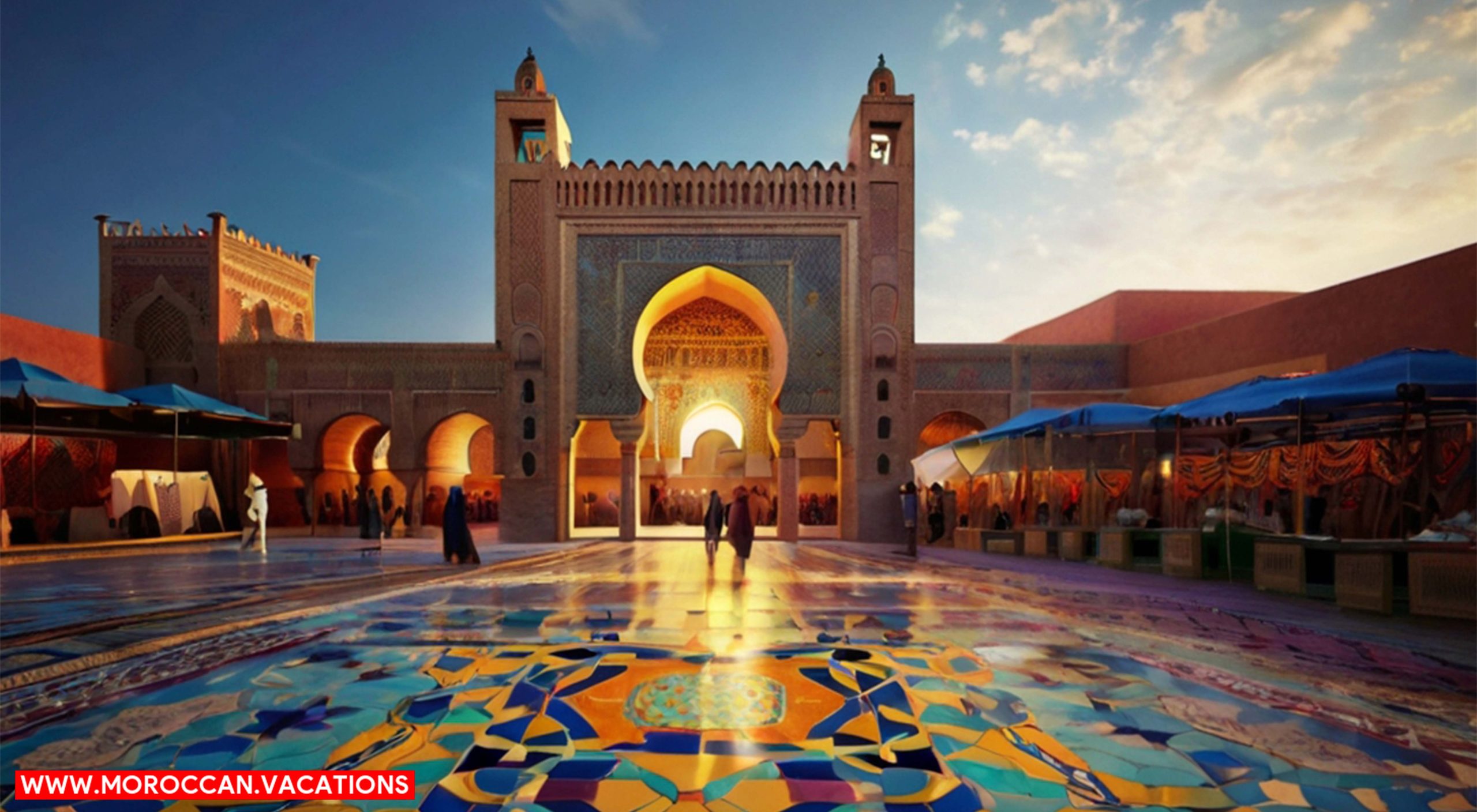

Continue your exploration of Marrakesh’s art scene by delving into the vibrant world of Marrakesh’s art festivals, where tradition and innovation seamlessly blend together. These festivals serve as a platform for artists to showcase their talents while honoring the rich cultural heritage of Morocco. Marrakesh’s art festivals are a testament to the city’s commitment to preserving its traditional artistic practices while embracing artistic innovation.
One of the most prominent art festivals in Marrakesh is the Marrakech Biennale. This internationally acclaimed event brings together artists from around the world to celebrate contemporary art in all its forms. Through exhibitions, installations, performances, and workshops, the Marrakech Biennale showcases the fusion of traditional Moroccan art with modern artistic expressions. This blending of tradition and innovation creates a unique and captivating experience for festival-goers.
Another notable art festival in Marrakesh is the Marrakech International Film Festival. While primarily focused on cinema, this festival also incorporates other art forms such as photography and fashion. The festival provides a platform for both established and emerging filmmakers to showcase their work and engage in conversations about the ever-evolving world of film. Through its diverse program, the Marrakech International Film Festival highlights the intersection between traditional storytelling techniques and innovative cinematic approaches.
Marrakesh’s art festivals not only encourage artistic innovation but also contribute to the preservation of Morocco’s cultural heritage. By showcasing traditional artistic practices alongside modern interpretations, these festivals create a space for dialogue and exchange, fostering a deeper understanding and appreciation of the rich artistic traditions of Marrakesh. Whether you are a seasoned art enthusiast or simply curious about different artistic expressions, Marrakesh’s art festivals offer a unique and enriching experience that celebrates both tradition and innovation.
Street Art and Graffiti: A Contemporary Expression in Marrakesh
As you delve deeper into the vibrant world of Marrakesh’s art scene, you will discover how street art and graffiti have emerged as a contemporary expression that seamlessly blends tradition and modernity. Marrakesh, known for its rich cultural heritage and ancient architectural marvels, has embraced street art and graffiti as a form of activism, injecting a fresh and rebellious spirit into its artistic landscape.
- Graffiti as a Form of Activism: In Marrakesh, graffiti serves as a powerful tool for social and political commentary. Artists take to the streets, using vibrant colors and bold imagery to voice their opinions on issues ranging from human rights to environmental concerns. The walls of Marrakesh become a canvas for activism, attracting attention and sparking conversations among locals and tourists alike.
- The Fusion of Traditional and Contemporary Styles: Marrakesh’s street art scene is a fascinating fusion of traditional Moroccan motifs and contemporary artistic techniques. Artists draw inspiration from the city’s rich heritage, incorporating intricate geometric patterns, calligraphy, and vibrant colors into their graffiti. The juxtaposition of traditional elements with modern aesthetics creates visually striking and thought-provoking artworks that reflect the complex and evolving nature of Marrakesh’s culture.
- A Celebration of Freedom and Self-Expression: Street art and graffiti in Marrakesh represent a celebration of freedom and self-expression. Artists have the freedom to create without the constraints of galleries or institutions, allowing their work to reach a wider audience and have a greater impact. This form of artistic expression empowers individuals to share their stories, challenge societal norms, and inspire change, making Marrakesh’s streets a living gallery of creativity and defiance.
In Marrakesh, street art and graffiti serve as a powerful means of activism, blending traditional Moroccan aesthetics with contemporary techniques. They celebrate freedom and self-expression, creating a vibrant and dynamic art scene that captivates both locals and visitors.
The Role of Women Artists in Marrakesh’s Art Scene
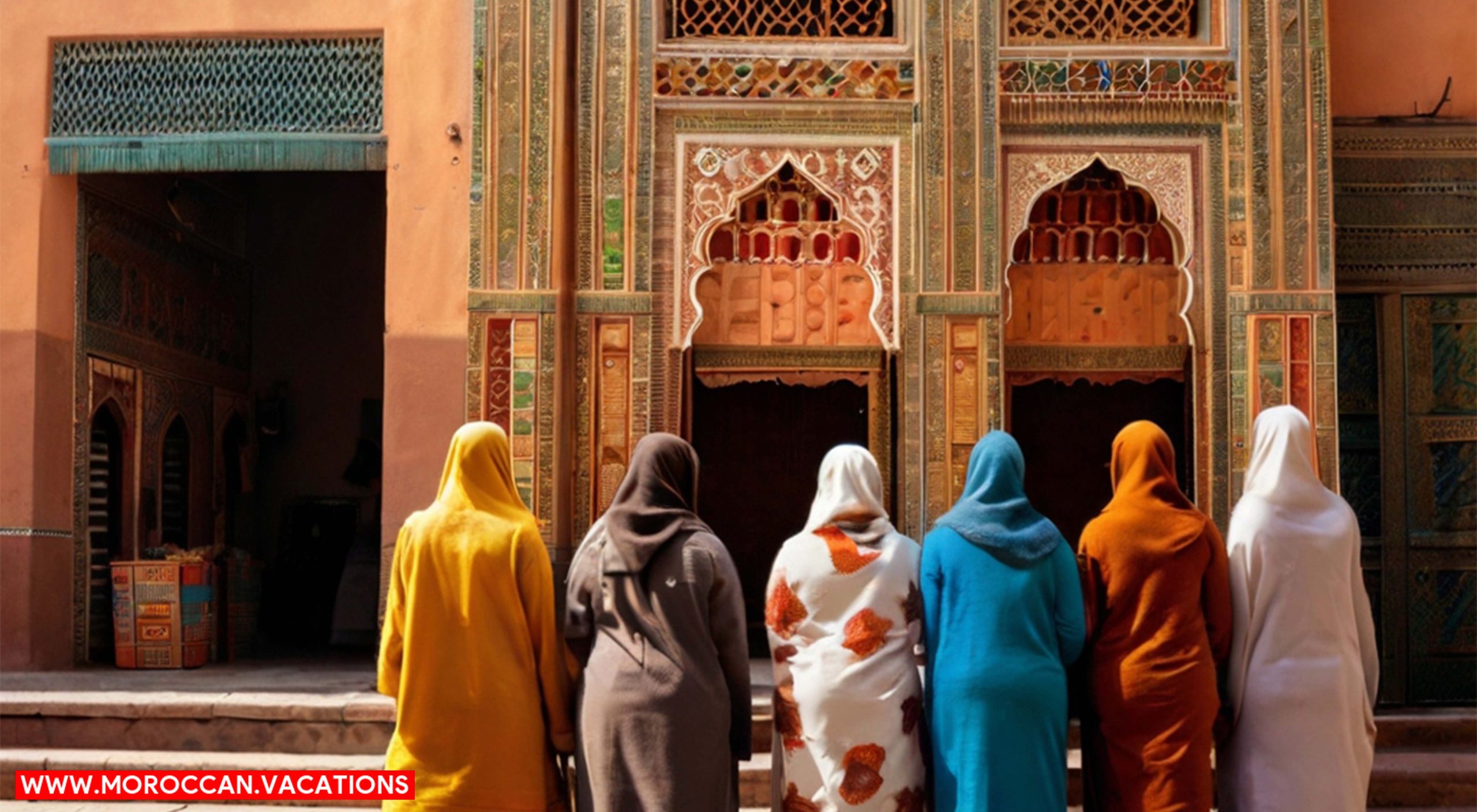

Women artists play a pivotal role in shaping Marrakesh’s vibrant art scene through their unique perspectives and creative contributions. Not only do they bring diversity and innovation to the art world, but they also play a significant role in promoting gender equality and challenging societal norms. Marrakesh’s art scene has long been dominated by male artists, but women have been steadily making their mark and gaining recognition for their talent and artistic vision.
One way in which women artists promote gender equality is by using their artwork to challenge traditional gender roles and stereotypes. Through their art, they explore themes of female empowerment, identity, and self-expression. They break free from societal expectations and create art that celebrates the strength and resilience of women. By doing so, they inspire other women to embrace their own creativity and challenge the limitations imposed on them.
Another important aspect of women’s art in Marrakesh is the portrayal of cultural identity. Women artists often incorporate elements of Moroccan culture, traditions, and heritage into their work. They use their art as a platform to express their unique experiences as Moroccan women and to showcase the richness and beauty of their cultural heritage. Through their artwork, they contribute to the preservation and celebration of Moroccan culture, while also challenging stereotypes and misconceptions.
The table below provides examples of prominent women artists in Marrakesh and their contributions to the city’s art scene:
| Artist Name | Unique Perspectives | Creative Contributions |
|---|---|---|
| Amina Agueznay | Explores themes of | Creates vibrant |
| female empowerment and | abstract paintings | |
| cultural identity | ||
| Leila Alaoui | Uses photography to | Documents the lives |
| highlight social issues | of marginalized groups | |
| and promote human rights | ||
| Soukeina Hachem | Incorporates traditional | Creates intricate |
| Moroccan patterns and | ceramic sculptures | |
| motifs into her ceramics |
Women artists in Marrakesh are not only contributing to the city’s vibrant art scene, but they are also playing a crucial role in promoting gender equality and challenging societal norms. Through their unique perspectives and creative contributions, they are shaping the art world in Marrakesh and beyond. Their artwork not only celebrates their cultural identity but also serves as a powerful tool for empowerment and self-expression. By breaking barriers and inspiring others, these women artists are making a lasting impact on the art scene and the society as a whole.
Art as a Catalyst for Social Change in Marrakesh
Artists in Marrakesh frequently use their work as a catalyst for social change, actively engaging with the community and challenging societal norms. Through their art, they promote cultural diversity and inspire freedom of expression. Here are three ways in which art in Marrakesh serves as a powerful force for social transformation:
- Art as a platform for marginalized voices: Marrakesh’s artists use their creative expressions to give a voice to those who have been silenced or marginalized. They shed light on social issues such as gender inequality, poverty, and human rights abuses, sparking conversations and raising awareness within the community.
- Breaking down cultural barriers: Marrakesh’s art scene acts as a bridge between different cultures and traditions. Artists often collaborate with international counterparts, showcasing diverse perspectives and promoting cross-cultural understanding. Their work challenges prejudices and stereotypes, fostering a sense of unity and appreciation for cultural diversity.
- Inspiring collective action: Art has the power to ignite social movements and inspire collective action. Through their creations, artists in Marrakesh inspire individuals to question the status quo, challenge oppressive systems, and work towards a more just and inclusive society. Their art serves as a catalyst for change, mobilizing people to take action and create meaningful social impact.
In Marrakesh, art is not merely a form of self-expression; it is a powerful tool for social change. Artists fearlessly use their talent to challenge norms, promote diversity, and inspire a community that desires freedom and equality.
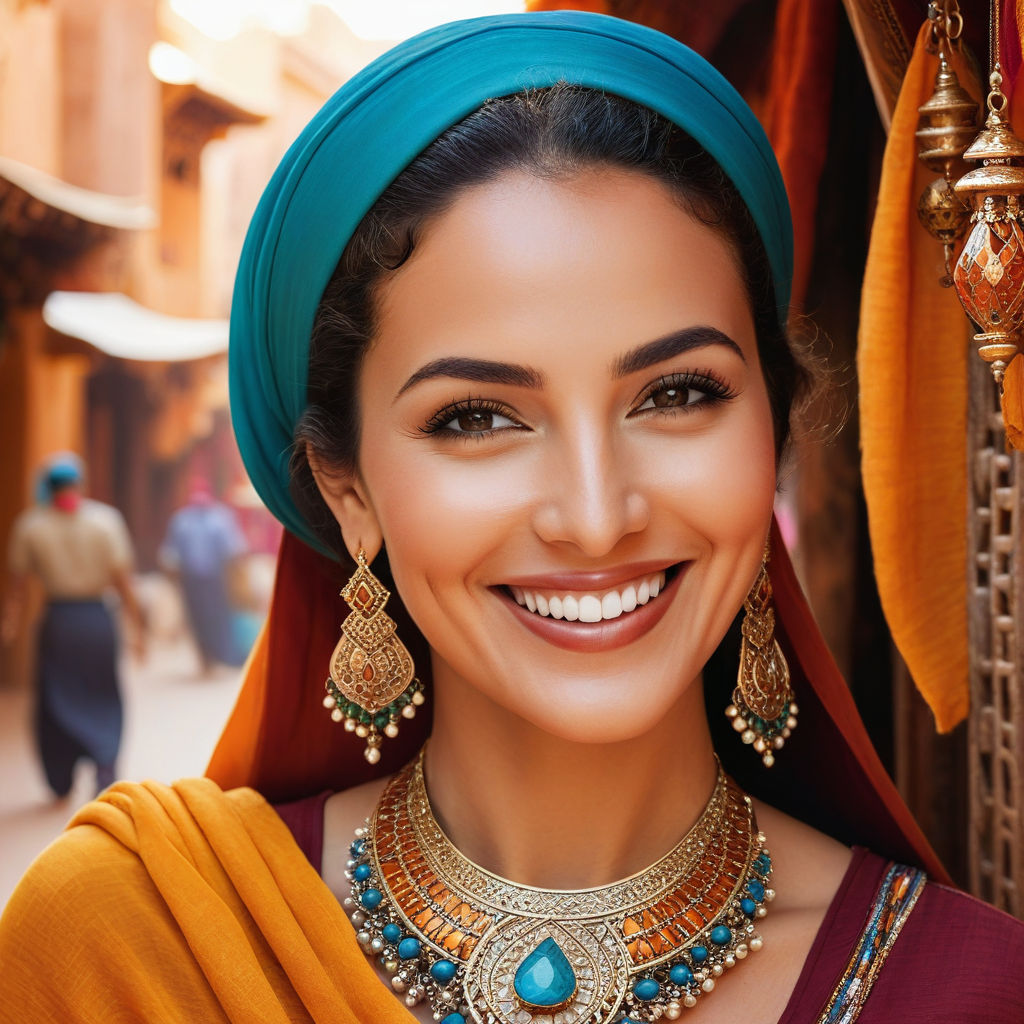

Samira Amrani
The passionate author behind Moroccan Vacations, sharing her expertise and love for Moroccan culture, cuisine, and travel experiences to inspire wanderlust in every reader.
Related Articles
Marrakesh's Art Workshops: A Hands-On Experience of Creativity
Exploring Marrakesh's Artistic Heritage Are you ready to unleash your creative potential? Look no further than Marrakesh's art workshops, where you can immerse yourself in a vibrant culture and learn new techniques and mediums. These hands-on experiences will allow...
The Symbolism in Marrakesh's Architectural Details
Uncover the rich symbolism woven into Marrakesh’s architectural details. From intricate tilework to ornate carvings, explore the cultural significance behind the city’s stunning landmarks. Embark on a journey of discovery through Marrakesh’s hidden meanings and timeless beauty.
Moroccan Artists Making Waves in the International Art World
Explore the vibrant creativity of Moroccan artists making waves in the international art scene. From contemporary masterpieces to traditional craftsmanship, discover the diverse expressions of Morocco’s cultural heritage. Immerse yourself in a world of inspiration and innovation with our curated collection of Moroccan art.

